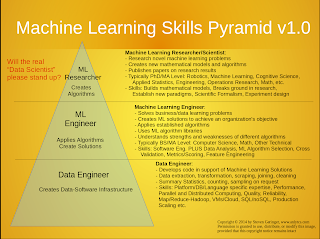Python is a great programming language. It is has a clean syntax, tremendous user community support, and excellent machine learning libraries. Unfortunately it is SLOW! So, when the situation calls for it, I prefer to drop down to machine code to run the actual machine learning algorithm.
One fast and amazing Machine Learning tool that I have used on a number of projects is Vowpal Wabbit. It was developed by researchers at Yahoo! Research and later at Microsoft Research. It has support for many types of learning problems, automatically consumes/vectorizes text, can do recommendations, predictions, classifications, (single and multi-class), supports namespaces, instance weighting, and the list goes on.
VW Homepage:
http://hunch.net/~vw/
VW Wiki:
https://github.com/JohnLangford/vowpal_wabbit/wiki
(The Wiki is better for finding all the functions and how to use it)
There are also a few Python wrappers for Vowpal Wabbit:
1. Vowpal Porpoise:
https://github.com/josephreisinger/vowpal_porpoise
2. PyVowpal:
https://github.com/shilad/PyVowpal
The problem with wrappers is that they don't always expose all the features you want to use. Vowpal has a lot of features. So, after a bit of hemming and hawing, I did a "slash and burn" then wrote what I needed. This is how I currently use Vowpal Wabbit with Python. Instead of a wrapper, I offer you code snippets which can be tailored to your specific needs.
This code assumes you know how to use Python and Pandas. It runs on linux and uses the matrix factorization feature (recommendation engine) of Vowpal.
Performance: With over 43 million rows, it took about 16 minutes to generate the inputs in the Pandas DataFrame, but only 9 minutes to train with 20 passes. (I7-2600K)
Enjoy!
Steve Geringer
##########################################################################
# Here are the essential ingredients. You'll have to fill in the
rest...;)
##########################################################################
import os
from time import asctime, time
import subprocess
import csv
import numpy as np
import pandas as pd
.
.
.
#############################################################
# Parameters and Globals
#############################################################
environmentDict=dict(os.environ,
LD_LIBRARY_PATH='/usr/local/lib')
# Hat Tip to shrikant-sharat for this secret incantation
# Note: only needed if you rebuilt vowpal and the new libvw.so is in
/usr/local/lib
parseStr = lambda x: float(x) if '.' in x else int(x)
#############################################################
# Vowpal Wabbit commands
#############################################################
"""
WARNING: MAKE SURE THERE ARE NO EXTRA SPACES IN THESE COMMAND
STRINGS...IT GIVES A BOOST::MULTIPLE OPTIONS ERROR
"""
trainCommand = ("vw --rank 3 -q ui --loss_function=squared --l2
0.001 \
--learning_rate 0.015 --passes 20 --decay_learning_rate 0.97
--power_t 0 \
-d train_vw.data --cache_file vw.cache -f vw.model -b 20").split('
')
predictCommand = ("vw -t -d test_vw.data -i vw.model -p
vw.predict").split(' ')
.
.
.
#############################################################
# Generate the VW Train/Test data format in a Pandas DataFrame using
the apply method
#############################################################
def genTrainInstances(aRow):
userid = str(aRow['userid'])
urlid = str(aRow['urlid'])
y_row = str(int(float(aRow['rating'])) )
rowtag = userid+'_'+urlid
rowText = (y_row + " 1.0 " + rowtag + "|user " + userid +"
|item " +urlid)
return rowText
def genTestInstances(aRow):
y_row = str(0)
userid = str(aRow['userid'])
urlid = str(aRow['urlid'])
rowtag = userid+'_'+urlid
rowText = (y_row + " 1.0 " + rowtag + "|user " + userid +"
|item " +urlid)
return rowText
.
.
.
#############################################################
# Function to read the VW predict file, strip off the desired value
and return a vector with results
#############################################################
def readPredictFile():
y_pred = []
with open('vw.predict', 'rb') as csvfile:
predictions = csv.reader(csvfile, delimiter=' ',
quotechar='|')
for row in predictions:
pred = parseStr(row[0])
y_pred.append(val)
return np.asarray(y_pred)
.
.
.
#############################################################
# Function to train a VW model using DataFrame called df_train
# - Apply genTrainInstances
# - Write newly create column to flat file
# - Invoke Vowpal Wabbit for training
#############################################################
def train_model():
global df_train, trainCommand, environmentDict
print "Generating VW Training Instances: ", asctime()
df_train['TrainInstances'] = df_train.apply(genTrainInstances,
axis=1)
print "Finished Generating Train Instances: ", asctime()
print "Writing Train Instances To File: ", asctime()
trainInstances = list(df_train['TrainInstances'].values)
f = open('train_vw.data','w')
f.writelines(["%s\n" % row for row in trainInstances])
f.close()
print "Finished Writing Train Instances: ", asctime()
subprocess.call(trainCommand, env=environmentDict)
print "Finished Training: ", asctime()
return
.
.
.
#############################################################
# Function to test a VW model using DataFrame df_test
# - Apply genTestInstances
# - Write new column to flat file
# - Invoke Vowpal Wabbit for prediction
#############################################################
def predict_model():
global environmentDict, predictCommand, df_test
print "Building Test Instances: ", asctime()
df_test['TestInstances'] = df_test.apply(genTestInstances,
axis=1)
print "Finished Generating Test Instances: ", asctime()
print "Writing Test Instances: ", asctime()
testInstances = list(df_test['TestInstances'].values)
f = open('test_vw.data','w')
f.writelines(["%s\n" % row for row in testInstances])
f.close()
print "Finished Writing Test Instances: ", asctime()
subprocess.call(predictCommand, env=environmentDict)
df_test['y_pred'] = readPredictFile()
return

















